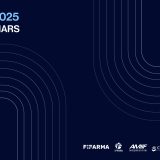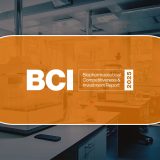Pharmacovigilance and its Impact on Public Health
Pharmacovigilance and its Impact on Public Health
By: Latin American Federation of the Pharmaceutical Industry (FIFARMA)
Health is an invaluable treasure, and medicines are one of the fundamental pillars to maintain it. However, like any medical intervention, medicines are not exempt from risks. This is where pharmacovigilance comes into play, a term we may not hear every day, but which has a profound impact on our health and well-being.
What is Pharmacovigilance?
Pharmacovigilance is the science and activities related to the detection, evaluation, understanding, and prevention of side effects or any other health problem related to medicines. In simple terms, it's like a surveillance system that keeps an eye on medicines after they have been approved for use, ensuring that they remain safe and effective in people's daily lives.
The Importance of Pharmacovigilance in Public Health
Public health focuses on the community's well-being, and this is where pharmacovigilance becomes a silent hero. By monitoring the effects of medicines after their approval, it helps identify potential risks that might go unnoticed in more limited clinical trials. For example, some rare or long-term side effects only become apparent when a medicine is used in a broader and more diverse population. Pharmacovigilance, therefore, acts as a safety net, collecting and analyzing data to ensure that a medicine's benefits continue to outweigh its risks.
Furthermore, in public health emergencies, such as a pandemic, pharmacovigilance becomes even more crucial. It enables healthcare professionals and health authorities to make informed and rapid decisions about the use of medicines and vaccines, carefully balancing the need for a quick response with patient safety. This balance is vital for maintaining public trust in healthcare systems and medical interventions.
On the other hand, pharmacovigilance plays an important role in education and communication. By providing up-to-date and accurate information about medicine risks, it helps doctors and patients make informed decisions. This is central in a world where information (and sometimes misinformation) is at our fingertips, ensuring that health decisions are based on reliable data rather than rumors or unfounded fears.
Common Errors and their Consequences
Despite pharmacovigilance's central role in public health, medication errors are a concerning reality, with consequences ranging from mild to potentially fatal. Common errors include incorrect prescription of medicines, which can occur for various reasons such as lack of knowledge about drug interactions or confusion caused by similar drug names. These errors can lead to severe adverse reactions, affecting patient recovery and, in some cases, causing additional complications. Furthermore, diagnostic errors can have devastating consequences, leading to inappropriate treatments and delaying recovery. Similarly, errors during surgical procedures, although less frequent, can be particularly serious, including postoperative complications that could have been avoided with more careful planning and execution.
Healthcare-associated infections, which can be acquired in hospitals or during medical procedures, are another significant problem. These infections prolong hospital stays, increase healthcare costs, and, in the worst cases, can be fatal. Patient falls in hospitals, although often overlooked, are a common source of injuries, especially dangerous for older or weakened patients. These incidents underscore the critical need for safer and more effective healthcare systems, where pharmacovigilance plays a vital role in identifying and preventing these risks.
The Role of Pharmacovigilance in Harm Prevention
Harm prevention is at the heart of pharmacovigilance. By closely monitoring medicine adverse effects, this discipline helps prevent harm that could be severe or even fatal. For example, if a severe side effect is identified in a group of patients, pharmacovigilance can lead to a review of the medicine's usage recommendations, or in extreme cases, its withdrawal from the market. This is crucial to protect patients from unnecessary complications and, in some cases, save lives.
Additionally, pharmacovigilance helps improve the quality of healthcare. By better understanding the risks associated with medicines, healthcare professionals can choose the safest and most effective treatment options for their patients. This is especially important in vulnerable populations, such as the elderly or those with pre-existing health conditions, where side effects may be more pronounced.
Pharmacovigilance also plays a crucial role in managing public health crises. By providing rapid and accurate information about medicine safety, it helps health authorities respond effectively to emergencies, such as disease outbreaks or pandemics, ensuring that the benefits of any medical intervention outweigh the risks.
Pharmacovigilance in Action
A clear example of pharmacovigilance's work can be seen in the response to the COVID-19 pandemic. Vaccines developed in record time have been closely monitored to ensure their safety and effectiveness. Thanks to pharmacovigilance, adverse effects have been identified and managed, ensuring that the benefits of vaccination outweigh the risks.
International Collaboration in Pharmacovigilance
Pharmacovigilance is a global effort. Organizations like the Pan American Health Organization (PAHO) and the World Health Organization (WHO) work together to establish standards and share vital information. This ensures that insights gained in one country can benefit others, improving medicine safety worldwide.
The Future of Pharmacovigilance
Looking ahead, pharmacovigilance is poised to play an even more significant role in public health. With advances in information technology and data analysis, pharmacovigilance is expected to become more proactive and predictive. Artificial intelligence and machine learning, for example, could enable real-time analysis of large datasets, identifying potential risks before they become serious problems.
Furthermore, the increasing globalization of healthcare means that pharmacovigilance must increasingly be a collaborative effort globally. International pharmacovigilance networks will enable rapid information sharing between countries and organizations, enhancing the global response to medicine risks.
Finally, the future of pharmacovigilance will also focus on personalization. As we move towards an era of more personalized medicine, pharmacovigilance will help understand how different patient groups uniquely respond to certain medicines, leading to safer and more effective treatments for all.
Conclusions
Pharmacovigilance, although often operating behind the scenes in the world of medicine, is a key piece in the complex healthcare puzzle. Its role in protecting public health is invaluable, providing a crucial layer of safety in the use of medicines and vaccines. As we advance in medical science, with increasingly innovative and potent treatments, the need for robust and effective pharmacovigilance becomes even more critical. It is a field that not only addresses current issues but also anticipates future challenges, constantly adapting and evolving to safeguard people's health.
Furthermore, pharmacovigilance has a significant impact on public trust in the healthcare system. In a world where information spreads rapidly, often without due scrutiny, pharmacovigilance provides a source of reliable, evidence-based information. By effectively communicating medicine risks and benefits, it helps patients and healthcare professionals make informed decisions. This transparency and openness are essential for maintaining public trust in medical treatments and public health policies.
Looking ahead, this science will remain an essential guardian in the world of medicine. With the integration of new technologies and collaborative approaches globally, its ability to protect public health will only strengthen. Pharmacovigilance is not just a medical discipline; it is a promise of safety and effectiveness for every patient receiving treatment. In a world where medicine and technology advance by leaps and bounds, pharmacovigilance remains the beacon guiding towards safe and effective healthcare.
Sources:
- https://www.who.int/es/news-room/fact-sheets/detail/patient-safety
- https://www.paho.org/es/temas/farmacovigilancia#:~:text=La%20farmacovigilancia%20busca%20
- asegurar%20que,o%20se%20interrumpe%20su%20producci%C3%B3n
- https://web.invima.gov.co/documents/20143/453029/1BOLETIN_15.pdf/600c5a74-d634-95e5-793e-548147f4f4ed


